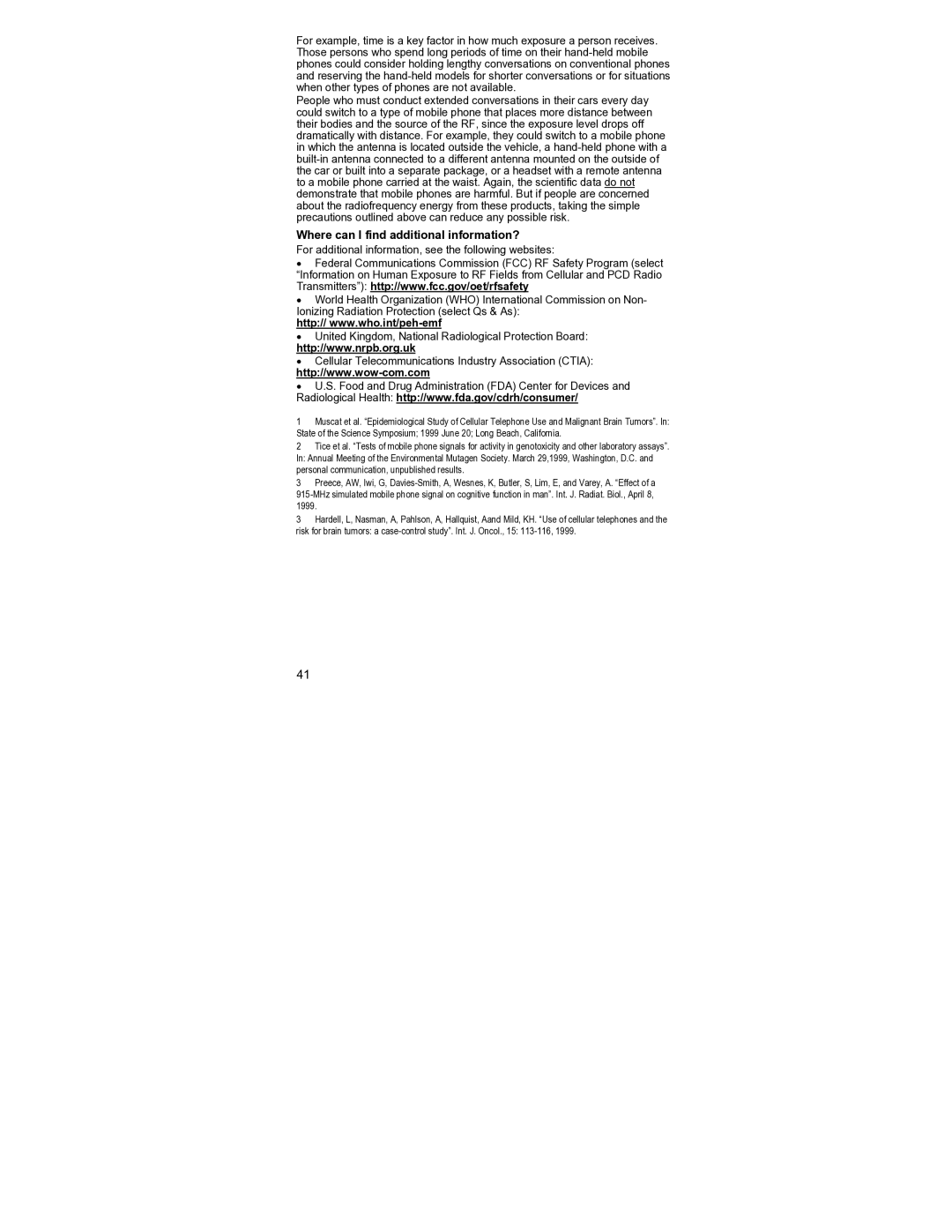For example, time is a key factor in how much exposure a person receives. Those persons who spend long periods of time on their
People who must conduct extended conversations in their cars every day could switch to a type of mobile phone that places more distance between their bodies and the source of the RF, since the exposure level drops off dramatically with distance. For example, they could switch to a mobile phone in which the antenna is located outside the vehicle, a
Where can I find additional information?
For additional information, see the following websites:
•Federal Communications Commission (FCC) RF Safety Program (select “Information on Human Exposure to RF Fields from Cellular and PCD Radio Transmitters”): http://www.fcc.gov/oet/rfsafety
•World Health Organization (WHO) International Commission on Non- Ionizing Radiation Protection (select Qs & As):
http://
•United Kingdom, National Radiological Protection Board: http://www.nrpb.org.uk
•Cellular Telecommunications Industry Association (CTIA):
•U.S. Food and Drug Administration (FDA) Center for Devices and Radiological Health: http://www.fda.gov/cdrh/consumer/
1Muscat et al. “Epidemiological Study of Cellular Telephone Use and Malignant Brain Tumors”. In: State of the Science Symposium; 1999 June 20; Long Beach, California.
2Tice et al. “Tests of mobile phone signals for activity in genotoxicity and other laboratory assays”.
In: Annual Meeting of the Environmental Mutagen Society. March 29,1999, Washington, D.C. and personal communication, unpublished results.
3Preece, AW, Iwi, G,
3Hardell, L, Nasman, A, Pahlson, A, Hallquist, Aand Mild, KH. “Use of cellular telephones and the risk for brain tumors: a
41
